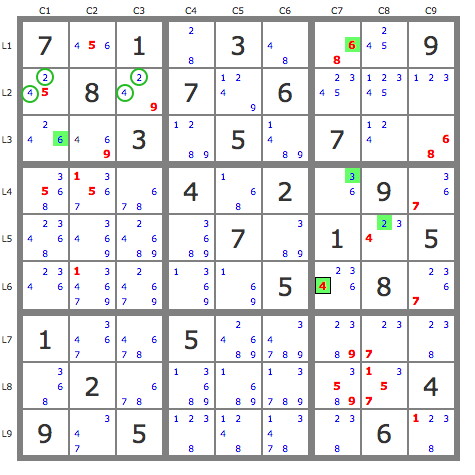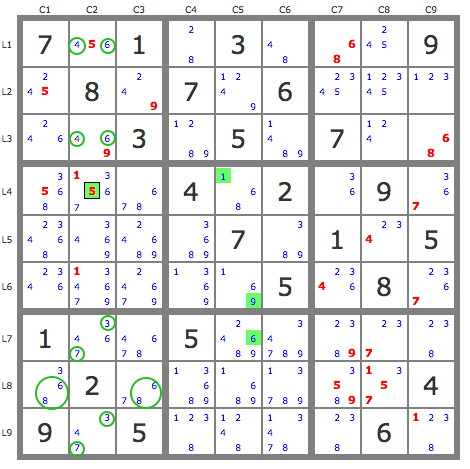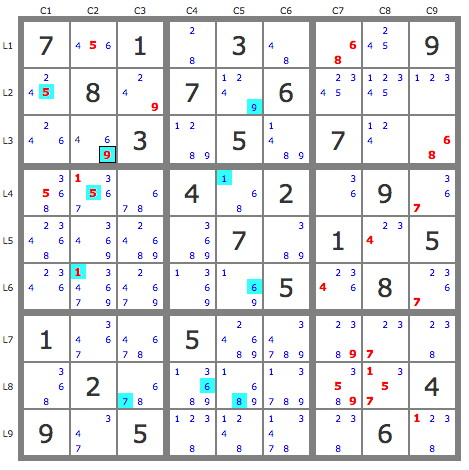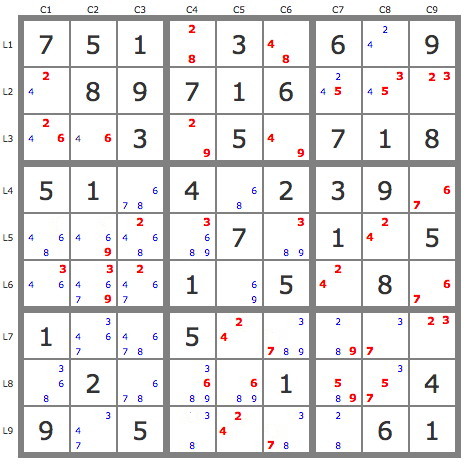Consider the following partition - the cells sitting in odd numbered rows and columns are colored red (or purple, in box 9), and the cells sitting in even numbered rows and columns are colored blue. It's easy to show that the red/purple cells must contain the same digits as the blue cells, plus one additional set of 1-9. (Consider rows 13579, and columns 2468; the former is five sets of 1-9 containing red and purple cells, plus some other cells in the odd rows and even columns; the latter is four sets of 1-9 containing blue cells, plus the same other cells in even columns and odd rows. This sort of argument is equivalent to MSLS.)
Red cells: 13 odd digits, 8 empty
Purple cells: 4 empty
Blue cells: 6 even digits
Red/Purple must contain 10 even digits (6 + the extra set of 4)
But because of the 46 in box 9, Purple can only contain 2 even digits, so the other 8 must be in red.
Additionally, we can't have more even digits in Blue, so the remaining Blue cells are odd.
And now in column 4, we have a hidden single 6 - it can't go in the blue cells, and was already ruled out of the yellow squares. So +6r5c4, and the puzzle reduces all the way down to SER 8.5...






